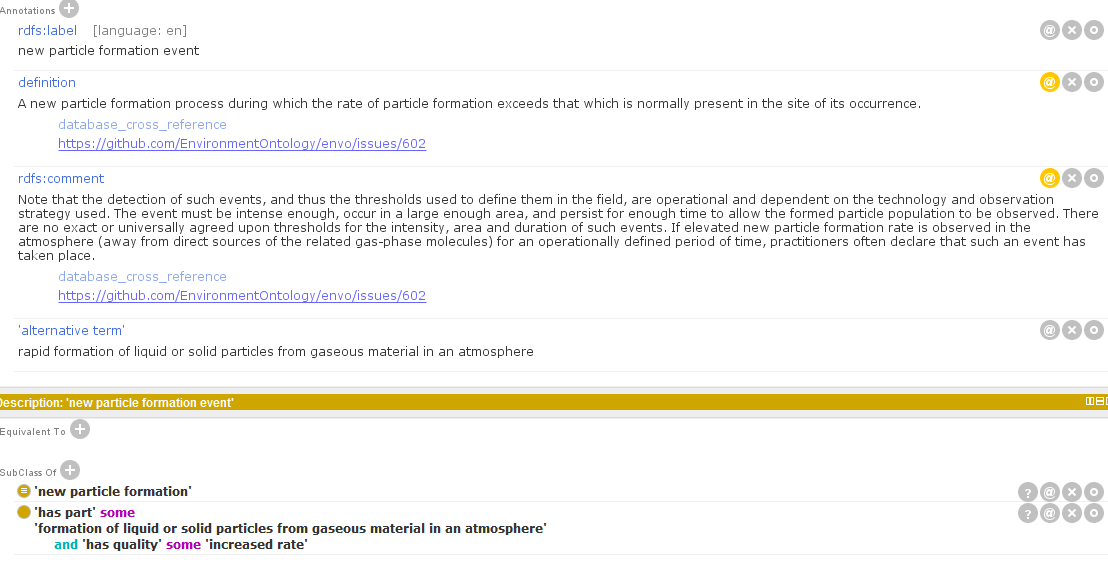we should name the classes using terms used by the research community.
So far ENVO hasn't really recognized any distinction between events and processes at the ontological level. A process is simply something that happens. Connections between smaller units and larger units would be achieved using relations like part-of. But we'd be open to other ways of modeling, especially if this fits better with other ways of modeling. We also try to represent the underlying process rather than it's observation.
A crucial point for the ontology is the level of granularity we're talking about. Does a single instance of particle formation generate a single particle? Or are we talking about assemblages of these? We have somewhat fudged this in analogous biological process ontologies, with the formal definition of metabolic or signaling processes being in terms of individual molecules, but with the classes used to represent statistical aggregates of these.



I had a meeting with the research community in Helsinki, including @mazaidan. It was pointed out that "formation of particles in an atmosphere" really should be called "new particle formation event". The researchers felt very strongly about having new and event in the concept. It was also pointed out that a process is not observed, rather the event is observed. To my understanding, the event consists of many processes. The point is, the correct naming of these terms isn't settled and I like to open this issue to try getting this straight, and I like to directly involve the research community (also Pauli et al. but not sure if they are on GitHub, @mazaidan can you check?).